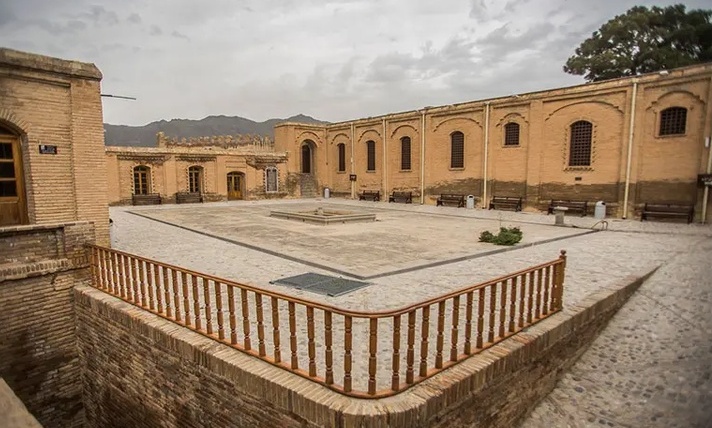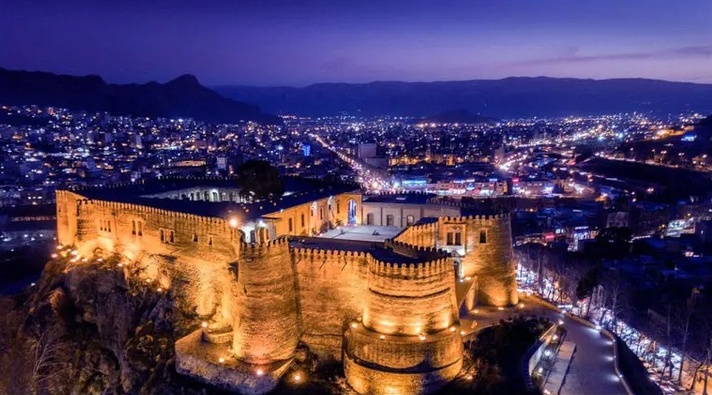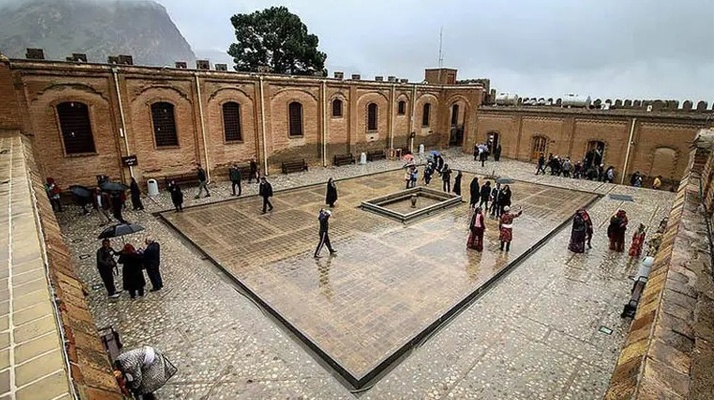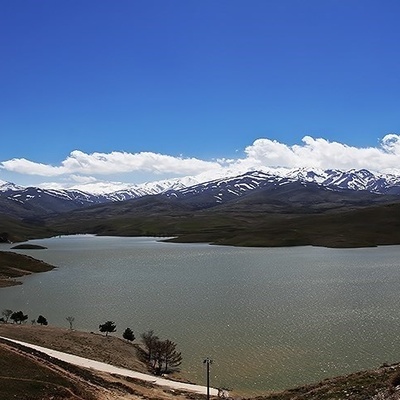SAEDNEWS: Falak-ol-Aflak Castle, perched on a hilltop in Khorramabad, is a stunning Sassanid-era fortress with twelve towering bastions that has guarded the heart of Lorestan for centuries. Today, it stands as both a historical landmark and a symbol of the region’s rich cultural heritage.
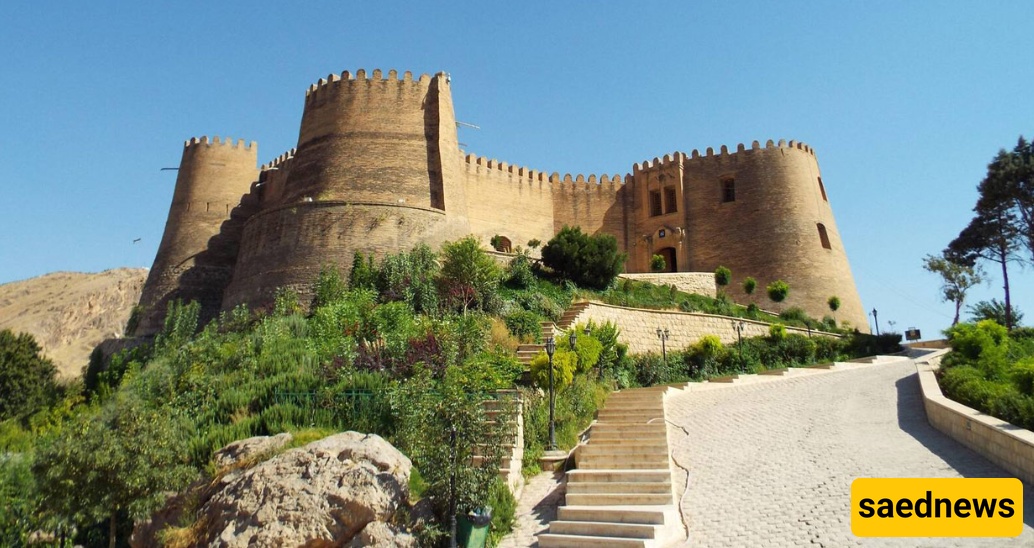
The name of Khorramabad is intertwined with the Falak-ol-Aflak Castle, and this historic fortress can be considered the symbol of the city. Just as the Eiffel Tower evokes Paris, Persepolis conjures Shiraz, and the Municipality Square represents Rasht, tourists remember the beautiful city of Khorramabad by its Falak-ol-Aflak Castle.
This stunning ancient fortress sits atop a hill, immediately catching your attention upon entering the city. The castle’s striking nighttime illumination gives it a spectacular appearance, further emphasizing its grandeur and magnificence.
Its extraordinary architecture, remarkable sections, and the museums housed within this historic fortress make it one of the most important attractions of Khorramabad and among the most famous historical sites in western Iran—factors that have helped the city gain a reputation as a tourist destination.
The ancient Falak-ol-Aflak Castle is located in the center of Khorramabad, on Imam Khomeini Street. Locals also refer to this street as Saheli (Riverside). In fact, the castle is the first thing you notice in Khorramabad, reminding visitors of the city’s civilization and glory.
You can reach this massive complex by private car, bus, or taxi, and spend hours exploring its various sections. If your accommodation is located in the city center, you can even walk to Falak-ol-Aflak, enjoying the route and the castle’s grounds without worrying about parking, traffic, and so forth.
Visiting hours for Falak-ol-Aflak Castle are from 8 a.m. to 9 p.m., and it is open to visitors every day of the week. Due to its limited space, the complex becomes very crowded during peak travel seasons to Khorramabad, such as Nowruz or summer holidays, sometimes making it difficult for tourists to visit.
Therefore, if you wish to explore all its sections at leisure, it is best to visit during early hours on peak travel days, or in the second half of the year when the number of visitors is significantly lower.
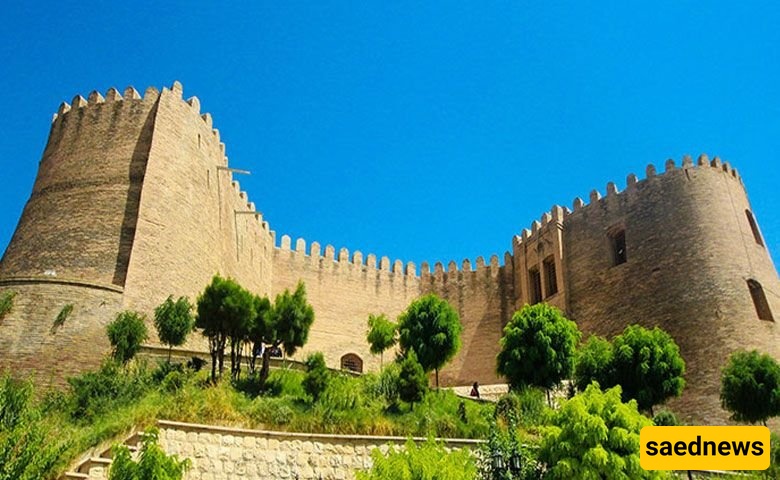
The foundation of the castle was laid during the Sassanid era by order of Shapur I. For this reason, it was originally called Shapur Khast Fortress or Castle.
This name remained for a long time; however, from the 7th century AH (13th century CE) onward, with the rise of various dynasties in Iran, it acquired other names such as Upper Castle, White Castle, Khorramabad Castle, Black Fortress, and the Atabakan Palace.
Finally, during the Qajar era, the name Falak-ol-Aflak was chosen for the fortress, and it has been known by this name ever since. Falak-ol-Aflak means “Sky of the Skies” or “Heaven of Heavens.”
Some believe the name was inspired by the 12 towers surrounding the castle’s walls, symbolizing the 12 zodiac constellations. However, its location atop a hill overlooking the city and its considerable elevation may also have influenced the naming.
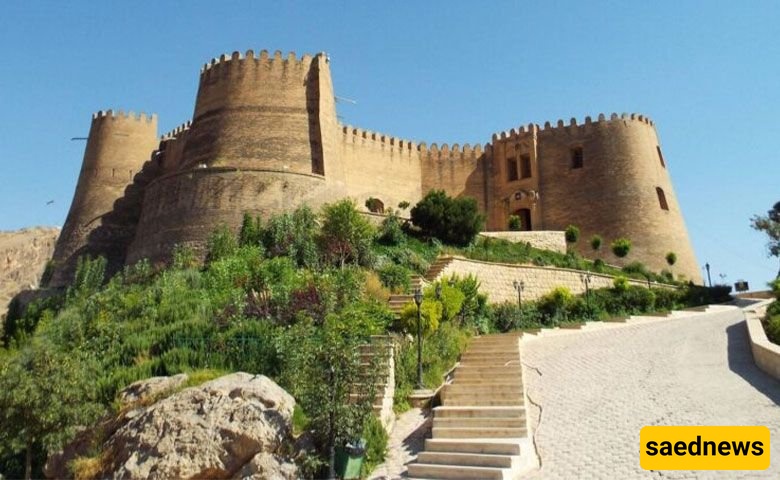
The first question that comes to mind when visiting the structure is: how old is Falak-ol-Aflak Castle? Archaeological studies conducted in the castle and the documents obtained indicate that Falak-ol-Aflak, originally known as Shapur Khast Fortress, was built during the Sassanid era around 650 AD. This means the fortress is over 1,300 years old.
At the time of its construction in the Sassanid era, Shapur Khast Fortress served military and governmental purposes, which is why it was built atop a high hill overlooking other parts of the city.
Later, during other periods of Iranian history—including the Buyid, Safavid, and Qajar eras—this strong fortress was used for various purposes such as the governor’s residence or a state treasury.
It is said that before the fortress was registered as a national heritage site in the late 1960s, the Pahlavi government used it as a military garrison and a place to imprison political opponents.
Although Falak-ol-Aflak Castle in Khorramabad has gone through many ups and downs in history and undergone changes, it still stands strong and is recognized today as one of the most important historical monuments of Iran.
At present, the Khorramabad Anthropology and Archaeology Museums are housed within the fortress, offering history enthusiasts the opportunity to learn about the culture and civilization of this part of Iran.
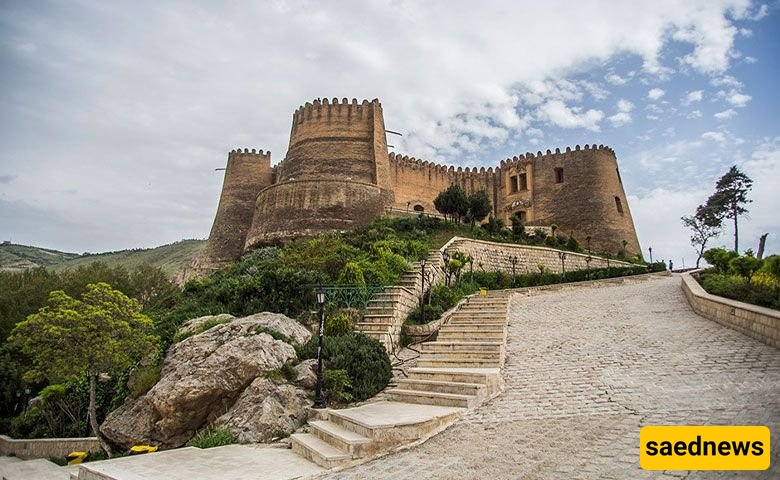
Falak-ol-Aflak Castle in Khorramabad is regarded as one of the masterpieces of world architecture, attracting numerous tourists from around the globe each year to admire its details and unique features.
The castle’s main plan is an irregular polygon, likely due to the shape of the hill on which it stands. According to historical documents, 12 towers once surrounded the castle, which is why it was also called the “12-Tower Fortress.” Today, only eight of these towers remain, with the rest lost over time for various reasons.
Its construction materials include large stones, mudbrick, red brick, lime, wood, and plaster. The strong defensive walls and the absence of fine details or decorations such as plasterwork or tilework confirm its original military purpose.
The castle’s structure was specifically designed for a high-altitude location. Because plaster and wood make the fortress vulnerable to water infiltration, a moisture-drainage system—consisting of underground channels to direct water away from the walls—was installed to reduce humidity.
It can be said that if this fortress had been built on flat ground without a drainage system, almost nothing would remain of it today. Its elevated location, dedicated water-drainage system, and ventilation allowing wind to pass through the structure have ensured that the base dries quickly after Khorramabad’s heavy rains.
The inclusion of such specialized details over 13 centuries ago, at a time when humans had minimal engineering knowledge, is among the castle’s enduring mysteries, making it a significant historical landmark.
One of Falak-ol-Aflak Castle’s secrets is the possible existence of a qanat beneath it. The presence of water in the fortress’s well—over 40 meters deep and hand-dug—strengthens this possibility. Overall, this historic castle is a masterpiece in terms of architectural, hydrological, and geological considerations, and research into its details continues to this day.
The area of Falak-ol-Aflak Castle is over 5,300 square meters and it is composed of various sections. The most important parts of the castle, which are highly attractive for tourists to visit, are as follows:
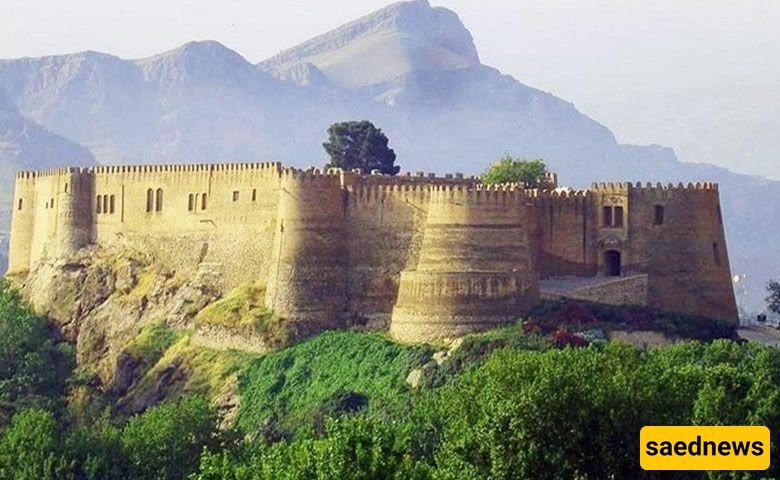
The massive circular and battlemented towers surrounding the castle are its symbol. At present, only eight of the castle’s original twelve towers remain, and continuous restoration efforts are being made to preserve them for future generations.
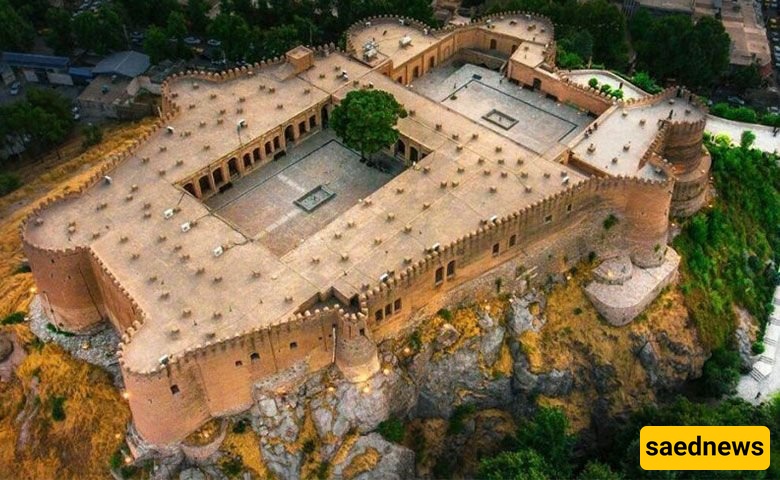
To access the castle, you must first climb the entrance stairs and reach the first courtyard. In this courtyard, there is the castle’s bathhouse and its famous and fascinating well, which attracts the attention of visitors.
The first courtyard, which you reach after passing through the main entrance, has four towers that were probably the castle’s watchtowers. The second courtyard, which is not much different from the first in shape and size, is surrounded on all four sides by large halls. The museums in the castle are located in the halls of the second courtyard and form the most attractive part of the castle.
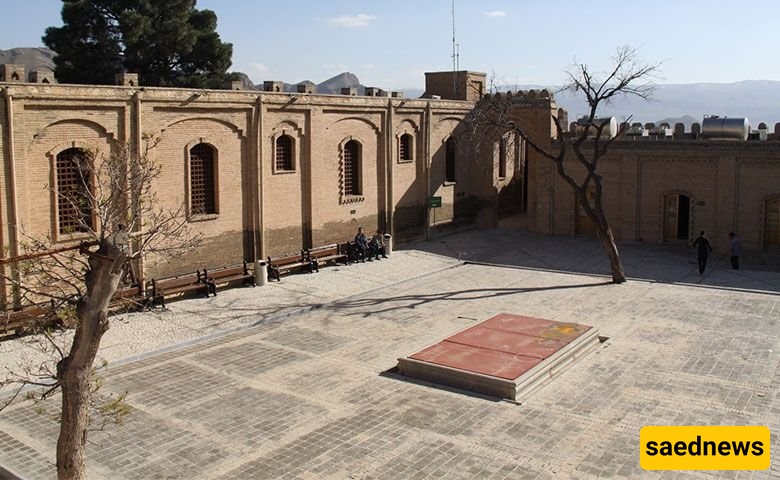
Adjacent to the grand Falak-ol-Aflak Castle lies a historic and beautiful garden dating back to the Qajar era, which in the past served as the residence and resting place of the rulers of Lorestan. This elegant historical mansion consists of a mosque, outer and inner sections, as well as a bathhouse and an artillery section, and offers delightful views.
The towering trees, pools, and streams in this garden—whose water is supplied by the Golestan spring—add freshness and vibrancy to the atmosphere.
Visiting the Golestan Mansion is attractive for tourists throughout the year; however, walking on the colorful leaves carpeting the garden makes strolling there in the autumn even more appealing.
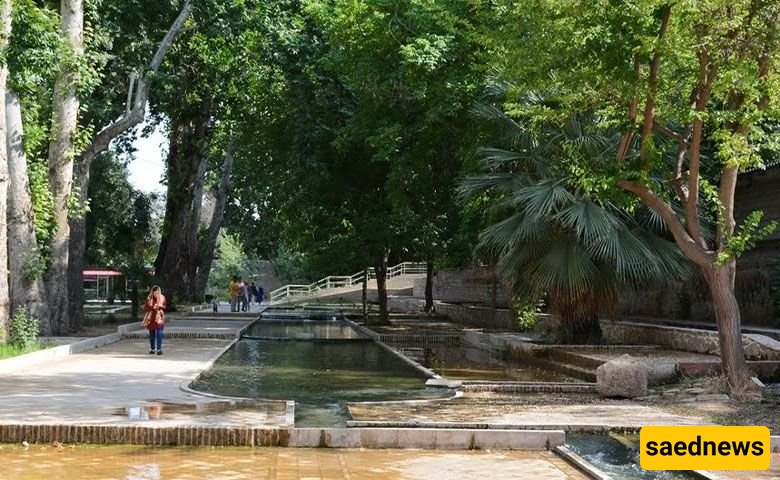
This museum, located in one of the large halls of Falak-ol-Aflak Castle, introduces you to the culture, customs, agriculture, music, clothing, and more of the people of Lorestan.
They beautifully showcase the people of this region. During your visit to this museum, you can learn about how bread and local dishes are prepared, traditional occupations, the making of authentic Luristan handicrafts, and the various ceremonies of the people of this province.
The museum’s photo gallery is also very impressive, displaying captivating images of Luristan’s nature and history for visitors. The most remarkable photos in this section belong to the Qajar period, depicting Luristan’s characteristics during that era.
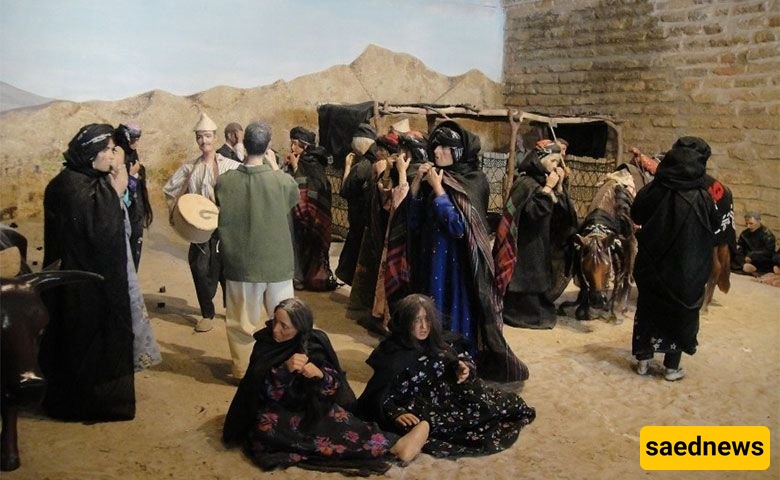
You probably know that Luristan Province is one of Iran’s oldest provinces, with a history spanning several thousand years. For this reason, during archaeological excavations carried out across the province, astonishing and valuable historical artifacts have been discovered and are now housed in the province’s museum.
At the Archaeology Museum in Falak-ol-Aflak Castle, hundreds of historical and ancient artifacts are preserved, making this part of the castle particularly fascinating for those interested in the history of this land.
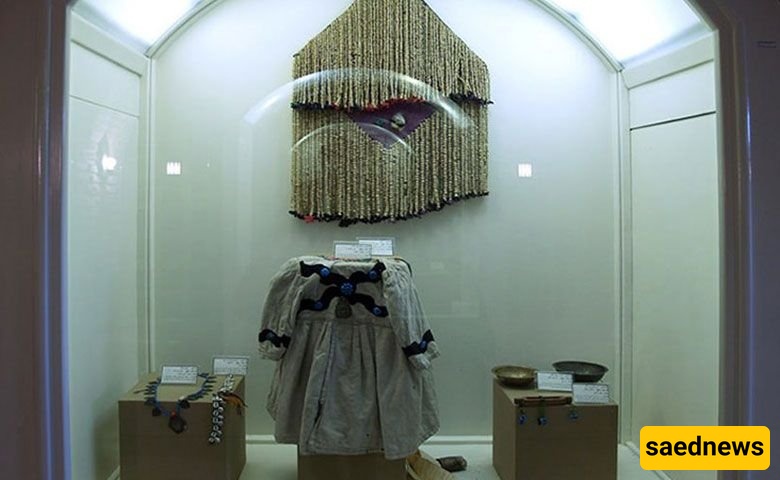
Khorramabad in Luristan is a four-season city, and visiting it is appealing and enjoyable throughout the year. You can travel to this city at any time and fully enjoy exploring its pristine nature and magnificent historical sites such as Falak-ol-Aflak Castle. However, some seasons are more popular for tourism in the city.
If you plan to visit Khorramabad specifically to see Falak-ol-Aflak Castle, it is important to consider peak travel times. The higher the number of travelers to Khorramabad, the greater the likelihood of large crowds at the castle, which may prevent you from visiting all parts of the building.
Therefore, to comfortably enjoy the quiet atmosphere and spend hours exploring the different sections of Falak-ol-Aflak Castle, it is better to travel to the city in the second half of the year. With the start of educational institutions in autumn, the influx of travelers to Khorramabad decreases, increasing your chances of a satisfactory visit to the city’s historical attractions. Additionally, the reduced number of visitors in the second half of the year makes it easier for you to access the best accommodations in the city at lower rental costs.
Thus, traveling in the second half of the year not only offers a good opportunity to enjoy the calm and tranquility of the city while visiting Khorramabad’s historical sites but also provides a chance for an economical and enjoyable trip.
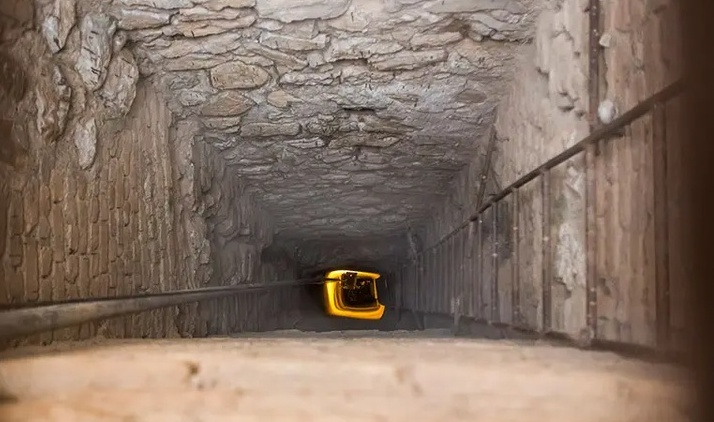
Until a few years ago, only general information about the castle’s well was known, such as its location in the northern part of the first courtyard. However, in 2017 (1396 in the Iranian calendar), the Luristan Water and Cultural Heritage Organization collaborated on a project that revealed the secrets of this well.
Excavations and research conducted by these organizations showed that, long ago, a 40-meter-deep well was manually dug into the hard rocks of Falak-ol-Aflak to provide water for the castle’s residents. Access to well water at that time, especially during periods such as wars when normal conditions were disrupted and the castle served as a strong fortress, was vital.
Experts believe that rainfall and snowfall supplied the well’s water, which then seeped into the lime layers of the well. Some people also consider the Golestan Spring, flowing beneath the castle, to be the source of the well’s water.
